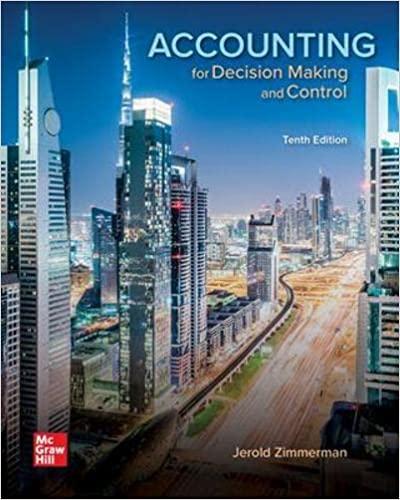Question
Question 3.1 Kim's Convenience store has a variable demand. On a given day, demand ranges from 270 to 330 customers a day who average purchasing
Question 3.1
Kim's Convenience store has a variable demand. On a given day, demand ranges from 270 to 330 customers a day who average purchasing 5 items each. The average daily demand is 300 customers. The convenience store currently operates 12 hours a day. Each order takes approximately 2 minutes.
Required
- What is the average customer waiting time, in minutes?
- What is the cycle time for an order?
- What is the waiting time if the average daily demand remains at 300 customers?
Question 3.2
Fit-For-A-King Inc. manufactures foam products for several upholstery companies. This company has two workstations, mixing/heating and cutting/assembly. The mixing/heating station is limited by the capacity of the equipment. Cutting/assembly is limited by the speed of the cutting machine workers. Cutting/assembly normally lags behind mixing/heating. Because the demand has increased in recent months, management is considering adding another person to cutting/assembly. This would increase the department's costs by $4,000 a month. If the person is moved from mixing/heating, that department's cost would decline by $3,000. By keeping mixing/heating laborer's the same, the department can increase production on-call by 10 percent. Current idle time in mixing/heating averages one-half person a day for a net cost of $1,400 a month.
Required
- What is the net effect of moving the employee from mixing/heating to cutting/assembly?
- What is the net effect if a new employee is hired for cutting/assembly?
Question 3.3
Sneaky Snacky Squirrel Inc. has a budget of $900,000 in 2021 for prevention costs. If it decides to automate a portion of its prevention activities, it will save $80,000 in variable costs. The new method will require $40,000 in training costs and $100,000 in annual equipment costs. Management is willing to adjust the budget for an amount up to the cost of the new equipment. The budgeted production level is 150,000 units.
Appraisal costs for the year are budgeted at $600,000. The new prevention procedures will save appraisal costs of $50,000. Internal failure costs average $15 per failed unit of finished goods. The internal failure rate is expected to be 3% of all completed items. The proposed changes will cut the internal failure rate by one-third. Internal failure units are destroyed. External failure costs average $54 per failed unit. The company's average external failures average 3% of units sold. The new proposal will reduce this rate by 50%. Assume all units produced are sold and there are no ending inventories.
Required
- What is the net change in the budget of prevention costs if the procedures are automated in 2021? Will management agree with the changes?
- How much will internal failure costs change if the internal product failures are reduced by 1/3 with the new procedures?
- How much do external failure costs change if all changes are as anticipated with the new prevention procedures? Assume all units produced are sold and there are no ending inventories.
Question 3.4
Safety First Inc. produces baby products, including car seats for children from 0-2 years old. The company is worried because one of its competitors has recently come under public scrutiny because of product failure. Historically, Safety First Inc's only problem with its car seats was stitching in the straps. The problem can usually be detected and repaired during an internal inspection. The cost of the inspection is $5.00 per car seat, and the repair cost is $1.00 per car seat. All 200,000 car seats were inspected last year, and 5% were found to have problems with the stitching in the straps during the internal inspection. Another 1% of the 200,000 car seats had problems with the stitching, but the internal inspection did not discover them. Defective units that were sold and shipped to customers needed to be shipped back to Safety First and repaired. Shipping costs are $8.00 per car seat, and repair costs are $1.00 per car seat. However, the out-of-pocket costs (shipping and repair) are not the only costs of defects not discovered in the internal inspection. Negative publicity will result in a loss of future contribution margin of $100 for each external failure.
Required
- Calculate appraisal cost.
- Calculate internal failure cost.
- Calculate out-of-pocket external failure cost.
- Determine the opportunity cost associated with the external failures.
- What are the total costs of quality?
- Safety First is concerned with the high up-front cost of inspecting all 200,000 units. It is considering an alternative internal inspection plan that will cost only $3.00 per car seat inspected. During the internal inspection, the alternative technique will detect only 3.5% of the 200,000 car seats that have stitching problems. The other 2.5% will be detected after the car seats are sold and shipped. What are the total costs of quality for the alternative technique?
- What factors other than cost should Safety First consider before changing inspection techniques?
Step by Step Solution
There are 3 Steps involved in it
Step: 1

Get Instant Access to Expert-Tailored Solutions
See step-by-step solutions with expert insights and AI powered tools for academic success
Step: 2

Step: 3

Ace Your Homework with AI
Get the answers you need in no time with our AI-driven, step-by-step assistance
Get Started


